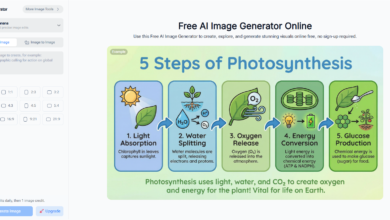5 Ways Automation Can Improve Cash Application Efficiency

Efficient cash application is vital for maintaining healthy cash flow and ensuring accurate financial operations. However, manual cash application processes can be slow, error-prone, and resource-intensive. Automation has emerged as a game-changer, helping businesses streamline operations, enhance accuracy, and free up resources for strategic tasks. Here are five ways automation can significantly improve cash application efficiency.
1. Accelerates Processing Times
Manual processes often lead to delays in updating customer accounts, which can affect credit decisions and customer satisfaction. Automation accelerates cash application by processing large volumes of payments within minutes. Payments from various sources—bank transfers, checks, credit cards—can be automatically reconciled with open invoices, ensuring real-time updates.
For example, businesses using automated cash application solutions can reduce payment matching and reconciliation times by up to 85%. This faster processing improves operational efficiency and strengthens customer relationships by ensuring accurate and timely account updates.
2. Eliminates Manual Data Entry
Manual data entry is one of the most time-consuming and error-prone aspects of cash application. Teams often spend hours inputting payment details from checks, bank statements, or remittance advice into their systems. Automation tools eliminate this by capturing payment data directly from multiple sources, such as emails, bank portals, and lockbox files, and matching it to open invoices in real-time.
For example, automated Optical Character Recognition (OCR) technology can extract remittance information from scanned documents or PDFs, drastically reducing manual intervention. This not only saves time but also ensures data accuracy, minimizing the risk of posting errors that could lead to disputes or delayed reconciliations.
3. Improves Matching Accuracy
One of the biggest challenges in cash application is matching incoming payments to the correct invoices, especially when remittance details are incomplete or missing. Automation leverages advanced algorithms to perform intelligent matching, even in complex scenarios. For instance, machine learning models can analyze payment patterns and identify matches based on partial or unstructured data.
By automating the matching process, businesses can achieve higher accuracy rates and reduce unapplied cash. This ensures that customer accounts are updated promptly, improving transparency and reducing follow-up tasks for both customers and internal teams.
4. Reduces Operational Costs
Manual cash application requires significant labor and resources, from data entry to exception handling. Automation reduces dependency on manual efforts by streamlining workflows and eliminating redundant tasks. With fewer errors and faster processing, businesses can save on costs associated with correcting mistakes, handling disputes, or hiring additional staff to manage growing payment volumes.
Additionally, automation tools provide scalability, allowing businesses to handle increased transaction volumes without proportional increases in operational costs. This makes automation a cost-effective solution for companies looking to optimize their cash application processes.
5. Provides Actionable Insights
Automated cash application systems generate detailed reports and analytics, offering actionable insights into payment trends, unapplied cash, and recurring exceptions. These insights help finance teams identify bottlenecks, improve processes, and make data-driven decisions.
For instance, automation can highlight recurring discrepancies in customer remittance data, enabling businesses to address these issues proactively. This not only improves the cash application process but also enhances overall financial management and planning. With real-time visibility into cash flow, businesses can forecast more accurately and allocate resources effectively.
Conclusion
Automation revolutionizes cash application by turning a traditionally manual, error-prone process into a fast, accurate, and cost-efficient operation. By automating data entry, improving invoice matching, and accelerating processing times, businesses gain quicker access to funds and reduce operational costs. Additionally, automation provides actionable insights that help teams optimize workflows and plan more effectively. With these advantages, automation isn’t just a productivity boost—it’s a strategic necessity for businesses looking to enhance cash flow, strengthen customer relationships, and stay competitive in a fast-paced market.

